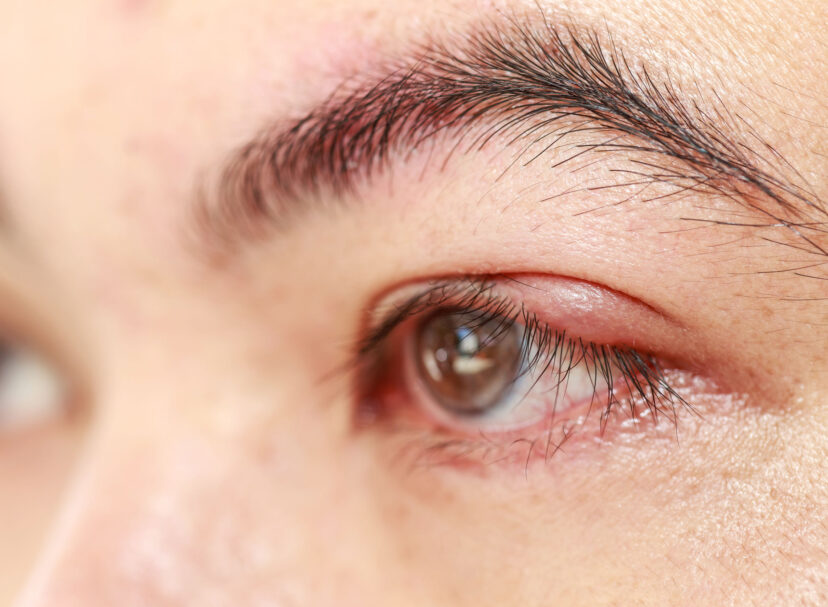If you have either near or farsightedness you are in good company. According to a recent publication, nearly 124 million people around the world suffer from one of these two refractive disorders. The solution to these vision problems is usually as simple as a prescription for contact lenses or glasses. But what are these ‘sightednesses’ really, what causes them, how are they related, and what are the complications involved?
Comparing Normal Vision

The easiest way to think about these eye disorders is to compare them to how eyes that are ‘normal’ receive images. According to the US National Library of Medicine:
Normal vision occurs when the light is focused directly on the retina rather than in front of or behind it. A person with normal vision can see both near and far objects clearly.
Nearsightedness results in blurred vision when the visual image is focused in front of the retina, rather than directly on it. It occurs when the physical length of the eye is greater than the optical length. For this reason, nearsightedness often develops in the rapidly growing school-aged child or teenager, and progresses during the growth years, requiring frequent changes in glasses or contact lenses. A nearsighted person sees near objects clearly, while objects in the distance are blurred.
Farsightedness is the result of the visual image being focused behind the retina rather than directly on it. It may be caused by the eyeball being too small or the focusing power being too weak. Farsightedness is often present from birth, but children can often tolerate moderate amounts without difficulty and most outgrow the condition. A farsighted person sees faraway objects clearly, while objects that are near are blurred.
So if you are nearsighted you likely need corrective lenses to drive or watch a movie and if you are farsighted you need them to read or work on a computer.
Nearsightedness

Myopia is the technical term for nearsightedness. Other than blurry vision, symptoms may include:
- Squinting when looking at far away objects in order to see them clearly
- Headaches that are due to the eyes straining to see far away objects
- Difficulty seeing while driving at night, which may indicate night myopia, a particular type of nearsightedness
According to the Mayo Clinic, nearsightedness is usually first detected in childhood and is usually diagnosed officially by the time that child is a teenager. Children with nearsightedness may show signs such as persistently squinting or sitting closer to a movie screen or toward the front of a classroom. They may also be less aware of objects that are far off, blink a lot, or rub their eyes frequently. On its own nearsightedness can get in the way of the ability to work or lead a normal life, but is easy to correct with lenses. Because the elongation of the eyeball that causes this can develop over time it may not be immediately noticeable.
Occasionally, it can lead to the detachment of the retina. This is a medical emergency for which you should seek immediate attention. Symptoms include:
- The sudden appearance of floaters, which are specks of darkness that drift through your field of vision
- Flashes of light in both, or a single, eye
- A shadow, like a curtain, over your vision
Farsightedness

Hyperopia is the clinical term for farsightedness. Along with the shortening of the eyeball and weakness of focusing power, this disorder can also be caused by an irregularly shaped lens or cornea. Farsightedness is typically hereditary, and shows up in childhood, although it can also develop with age. In that case, it is presbyopia. Farsightedness can come with the same headache due to eye strain often present with myopia, and an opposite set of additional symptoms that usually include holding things at arms-length to read.
According to the News of Medical Life Sciences, this is actually a little harder to correct with eyeglasses, whereas contact lenses provide a “more accurate refraction of the light rays for people with the farsightedness problem.” The publication also suggests that “Refractive surgery may also be used, and there are many types of surgical options available to correct farsightedness that is corneal, sclera, and lenticular based. These types of surgeries aim to increase the focusing power.”
If you have either nearsightedness or farsightedness you have a high risk of also having astigmatism. This is “imperfection of the cornea preventing part of it from focusing light onto the retina. The result is a blurred area within an otherwise clear image. This problem may occur along with either myopia or hyperopia. These frequent conditions are termed “refractive errors.” (Source).All of these should be checked once a year by an eye doctor that will track their progress and make sure that any corrective lens prescriptions are up to date. If you decide to have surgery to correct the problems, it is important to make sure that you develop an exceptional pre-and-post surgical eye hygiene routine. A sure-fire way to do that is with daily use of Cliradex, which will keep Demodex mites at bay.





